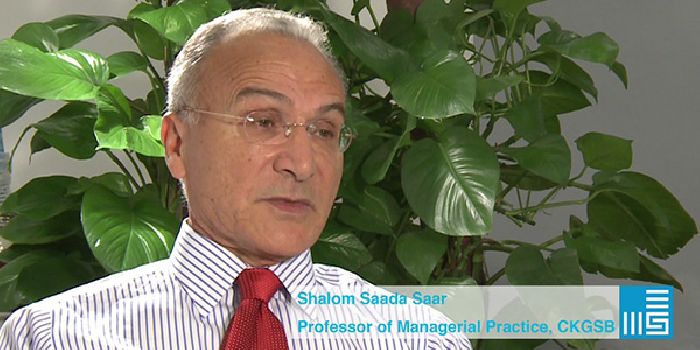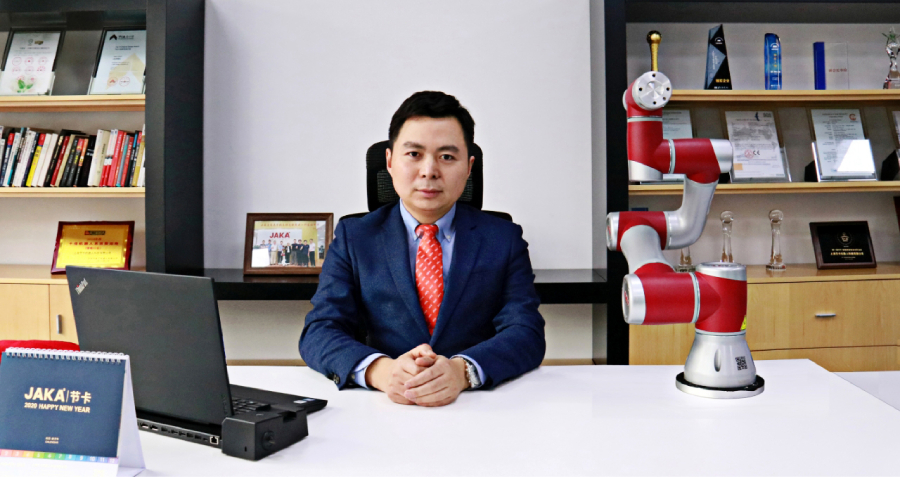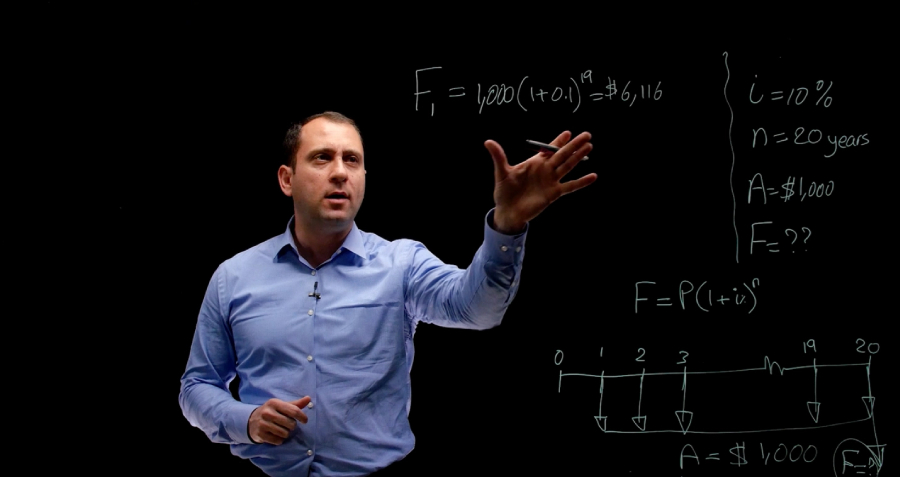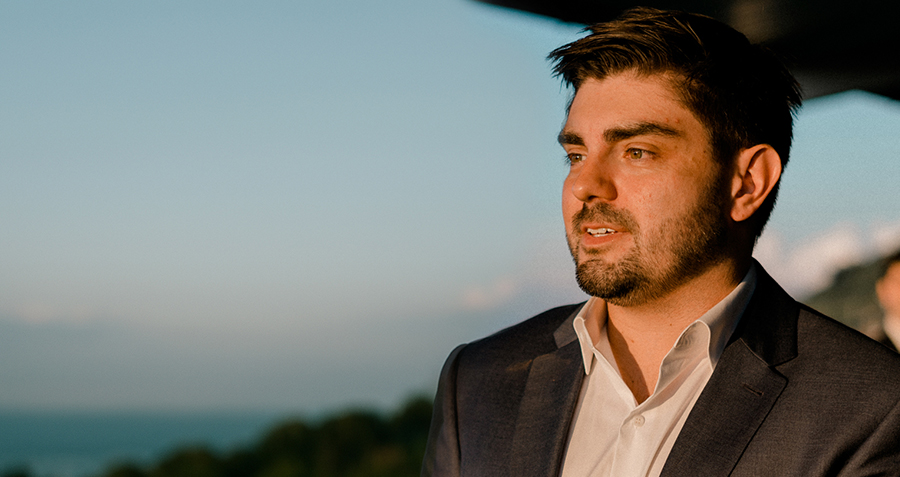An interview with Shalom Saada Saar, Professor of Managerial Practice at CKGSB and Senior Instructor, MIT, on his upcoming book Leading with Conviction (Jossey Bass).
For several decades now, scholars have spent hours and hours agonizing over what leadership really is. But there is precious little on how to exercise true leadership. Shalom Saada Saar, Professor of Managerial Practice at CKGSB and Senior Instructor, MIT, has been researching this subject for a long time now and has also coached several hundreds of senior executives and CEOs in the US, Europe and Asia. As he interacted with them over the years, Saar realized that it was high time to find that missing piece in the puzzle and help people exercise true leadership. The result of this is Leading with Conviction (Jossey Bass, upcoming), a book in which Saar and his long-time collaborator and co-author Michael J. Hargrove distil the wisdom from three decades of experience as a professor as well as a leading executive coach.
In an interview with CKGSB Knowledge’s Neelima Mahajan, Saar describes the contours of his new work:
Q. What was the trigger for this book? What was the void you saw in leadership literature already out there that you wanted to fill?
A. I don’t think there is a void as much as the literature on leadership is scattered all over the place. If you look at the work of Chris Argyris, Howard Gardner or Ronald Heifetz, all these books say what leadership is. And that is very subjective. What is missing, I believe, is how do we get there? The ‘how’ remains, in my view, an unknown. People say, “I know the seven habits of effective leaders, I know the seven mindsets or the ten mindsets. What I don’t know is that I am in a leadership position, and how do I (exercise leadership)?” This book accepts the literature that has been building up in the last 2-3 decades and helps the reader understand the ‘how’ – what one needs to do, almost step by step, to really understand and practice this idea of leadership.
Q. Throughout the book, you lay a lot of emphasis on leadership with a small ‘l’ as opposed to the big ‘L’. Where are you coming from?
A. Most books focus on leaders with the big ‘L’ – the Gandhis, the Mandelas, the Churchills, the Kennedys and the Deng Xiaopings of the world. But the reality is that we cannot emulate those leaders. I don’t believe that leaders are born either. The time has come to look for leadership with the small ‘l’. When a receptionist picks up the phone and is very kind to the caller, at that particular moment, he or she actually exercises leadership with a small ‘l’. When a Chinese worker leaves his home for six months or one year in order to provide a living for his family so that his child has a better life, that particular moment to me is an act of leadership.
Leadership is a series of acts – when we accumulate them, we really begin to practice, demonstrate and experience the notion of leadership. So leadership with a small ‘l’ can be about the single parent who is trying to work and raise a child, a team leader who is trying to improve the performance of the team, a division leader, a CEO, a mayor,… It is about those who really help life to move on.
I am interested in that small ‘l’. I think we have ignored it. We look at the leadership with the big ‘L’ and we read about it, and it makes for fascinating biographies, but to be able to emulate it, I think, most of those books come short. They are great books. Don’t get me wrong, but I think there is a void, there is a missing piece in literature that can look at the average person in the course of the day and what acts he or she takes to exercise leadership because leadership, in my view is an activity. We often look at the leadership as “I want to be the leader”, but if you really dissect leaders, (you’ll find that leadership is) a battery of activities. I am interested in what those activities are.
Q. You just touched upon the fact that you believe leaders are not born. For many decades now, that has been the subject of a constant debate — are leaders born or made. You seem to agree with the second statement.
A. No one has proved yet that leaders are born. Look at the leaders you admire – if you want to look at leaders with the big ‘L’ like the Gandhis, Mandelas and Anwar Sadats of the world – they failed miserably, they met crisis unsuccessfully. They were, in many ways, incomplete. But what distinguishes the leader from the non-leader is the ability to look at yourself and understand why you failed, why you went astray, what you did wrong, and whether you were on an ego trip? And as you look at it, you begin to understand yourself, and as you understand yourself, those ideas of leadership begin to evolve. Most of us don’t really exercise leadership, because we are not willing to look at the mirror to understand who we are, what we are, what makes us who we are and this refusal to analyze oneself becomes the Achilles heel that in many ways, deprives most of us from this idea of leadership.
Q. The idea of knowing oneself is one of the key points of your book. However, knowing oneself is surprisingly not as easy as it sounds. What really comes between us and our understanding of ourselves?
A. For so many years, I have coached hundreds and hundreds of executives, CEOs and people from all walks of lives – from governmental agencies, to not-for-profit business organizations. I have come to see that there is a common trait to those who are ineffective and the ineffectiveness is largely due to this idea of not knowing who they are. They have no idea of how they come across, what impact they make on others, how they carry themselves, and how they interact with each other. This lack of knowledge is the greatest barrier to leadership. Knowing oneself is not new concept – 2,400 years ago, Sun Tzu said that the general must know himself because if he does not know who he is, there is no way he can be successful. It really means that you must know your strengths and your weaknesses as those weaknesses can become your biggest derailers.
Let’s talk about Sun Tzu’s premise that the general must know himself and know their enemy. We understand what it means to know oneself and it is not easy to achieve. But the second part is to know your enemy. I ask my students, “Who is the enemy?” They say, “The competitors.” I say, “No.”. They say, “The boss.” I say, “No.” That’s when I think of Pogo’s famous line, “All too often, the enemy is us.” We need to know ourselves because the enemy sometimes is built inside us, and we need to understand that and how to manage it and correct ourselves.
We need to look deeper into ourselves. The process is painful – it is almost like peeling an onion in order to understand what our strengths and weaknesses are, what our dragons are, what is it in our way that can deprive us of being successful and, most importantly, being happy.
Q. Your book is organized around different ‘pillars’ or dimensions of leadership such as self-awareness and balance. Do good leaders have to have all these dimensions?
A. Often leaders might be very good at one dimension but not good at others. For example, I know many executives who have a very good vision and they can envision the future. But when it comes to the dimension of communicating that vision – not just talking, but listening, probing and asking – they come short. So being good at one dimension is insufficient. You can communicate very well, but if you don’t have a clear vision, if you don’t know how to execute, if you don’t know how to work through others, it is incomplete. Most leaders are incomplete. The challenge is to have as many dimensions as possible, to have them embedded in you in order to really exercise leadership.
Q. Have you ever come across someone who is truly an exemplary leader by these standards?
A. I have not met individuals who, I would say, are complete on those dimensions. That is why I call it a ‘leadership journey’ – that we never actually get there. It is like one battle at a time to conquer a dimension and to embed it in us. I have not (come across) a person, (either) small ‘l’, or big ‘L’, who can actually serve as a role model. Think of any leader and I can tell you his or her flaws. As great a leader as he was, Gandhi was a terrible father. Nelson Mandela would perhaps be the closest (to being a great leader) just because of the suffering he had to encounter to understand himself and drive this incredible revolution. But even Mandela, in the last 5-7 years has not been the role model we would like him to be. I believe that the human being is not a perfect machine, so I am wary of identifying a person as a role model because sooner or later, most role models disappoint us.
Q. This also points to the whole question of balance or the lack thereof, which is also listed as one of the essential pillars of leadership in your book. Have you come across any example of leaders who are able to maintain balance, whether it is between the head and the heart, hard and soft skills, or stability and change?
A. Balance is not accomplished by the way – like any balancing act, it is trial and error. I have seen people who want to be successful, so they put all their weight on their professional engagement. They work hard, they stay (in office) for many hours, they go to school and get degrees, they sacrifice weekends, they don’t see their spouses and kids. They do whatever it takes. And all of a sudden, they feel that something is missing. One of my observations – of Chinese executives in particular – is that even though they have reached everything in terms of material things, they are not happy. I ask them why. They say it’s because something is missing in their lives. So it takes a long time to find a point of equilibrium, a lot of trial and error. Some people are better at it, they know how to balance between work and home, between being an individual and being a member of the team, between using the left brain and right brain, but I don’t think it is a common practice.
Most books, especially in the last five years, have been encouraging people to be less of managers and more leaders, so less command-control, and more leader-facilitator or moving from a warrior to a diplomat. It is very misleading and dangerous. That’s why we call for balance – we need to remain commanding and controlling in situations that require control. The earthquake in Japan did not call so much for leadership. It called for managers to actually control the damage, to execute the orders, to provide emergency relief and in many ways, they came short. Leadership is a balancing act and it would mean being focused on the task and being people-oriented. One is not more important than the other. It is dangerous to say, “Let’s walk away from management skills and embrace leadership skills.” I believe that let’s hold the management skills, but add to the toolbox more leadership qualities. It’s not either-or, but both. Adding more tools is the secret to effectiveness.
Q. After this book, you are embarking on a new project on Chinese leadership. What is that about?
A. China is the next most exciting laboratory for social scientists. In the next book I am going to take 15 to 20 Chinese executives and CEOs, and really shadow them, follow them and see what they have accomplished, what their strengths and weaknesses are. I would like to see what are the common patterns and common denominators of Chinese leaders and managers versus their Western equivalents.




















